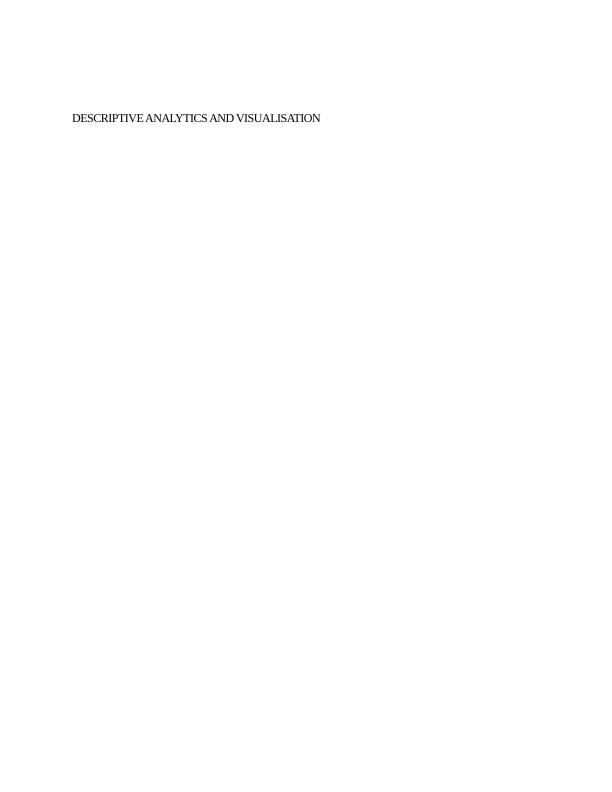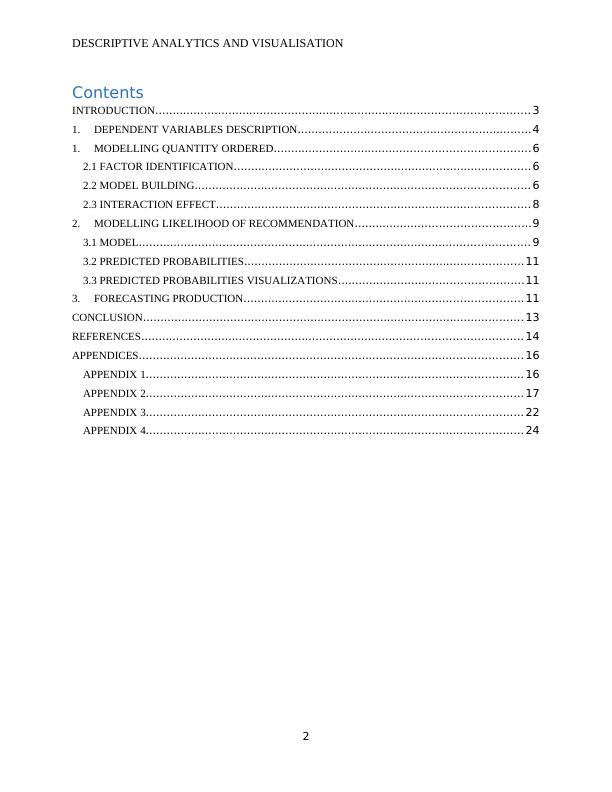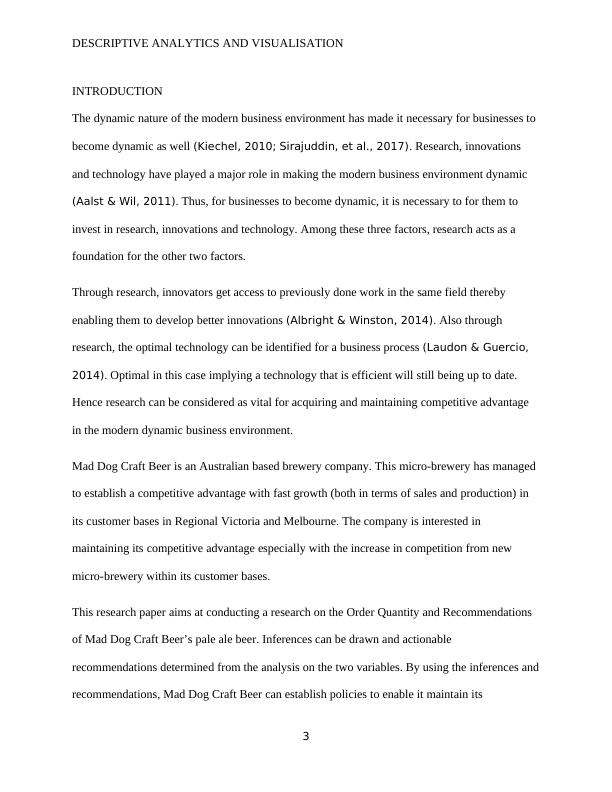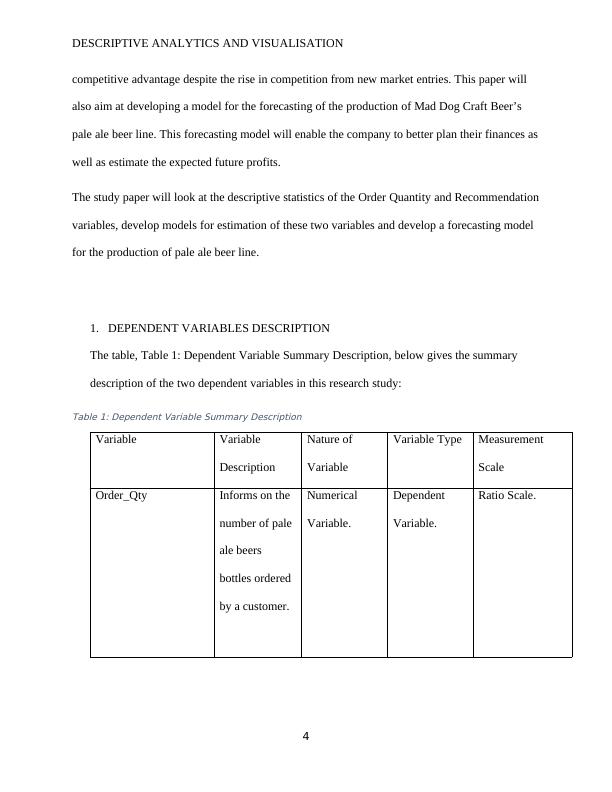Descriptive Analytics and Visualisation
Analyzing a given data set, interpreting and drawing conclusions, and conveying conclusions in a technical report to an expert in Business Analytics.
25 Pages3795 Words1 Views
Added on 2023-01-10
About This Document
This research paper explores the concepts of descriptive analytics and visualisation. It focuses on modelling quantity ordered, likelihood of recommendation, and forecasting production. The study aims to help businesses maintain a competitive advantage in the dynamic business environment. The research is conducted on Mad Dog Craft Beer, an Australian brewery company. The paper provides descriptive statistics, models, and forecasting techniques for the company's pale ale beer line. The study also emphasizes the importance of research, innovation, and technology in the modern business environment.
Descriptive Analytics and Visualisation
Analyzing a given data set, interpreting and drawing conclusions, and conveying conclusions in a technical report to an expert in Business Analytics.
Added on 2023-01-10
ShareRelated Documents
End of preview
Want to access all the pages? Upload your documents or become a member.
Data Analytics and Visualisation
|20
|4159
|36
Descriptive Analytics and Visualisation
|22
|3829
|64
A Case Study Using Data Analytics and Visualization
|18
|3946
|45
Prediction of Repurchase 5 - Variables Influencing the Purchase Decision
|15
|2699
|168
MIS771 - Descriptive Statistics and Visualisation
|18
|2627
|351
Descriptive Analytics and Visualization Assignment
|16
|3320
|344






